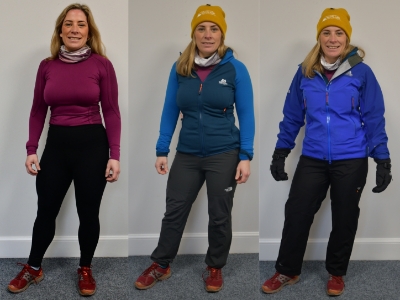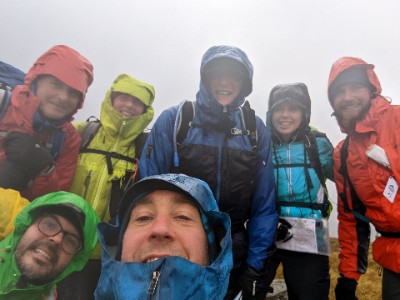Tuesday 18th October 2022, 10:03am

As the weather cools in autumn – often getting damper as well – it becomes more important to get our clothing right for the hills.
The temptation is to invest in a great thick jacket – the sort of thing that would keep you warm in a freezer. But in the Scottish climate, it’s not all about warmth, it’s about staying dry from both the outside elements and your own perspiration.
Layering is a term you’ll often hear. It’s a system devised by long experience which allows you to control your temperature, keeping you warm when the temperature drops but not making you overheat when you’re working hard.
There are three basic ‘layers’ of clothing involved.

This makes up your basic hill clothing and you can juggle
the layers to suit yourself and the weather. Most people keep their waterproofs
in their rucksack unless they’re needed for rain or to keep off the wind, which
also helps reduce condensation, although as the weather gets colder (and
windier) the outer layer becomes integral to keeping in the warmth your body
generates.
At this time of year, and in winter, it’s also a good idea to pack an extra layer: a warm jacket to provide extra insulation when you’re stopped or if the weather deteriorates seriously. It’s best to have a size large enough to pull on over the top of your outer layer and for the filling to be a manmade fibre that retains its insulation when wet. If you have to remove your waterproof to put it on you’re allowing valuable heat to escape and possibly water to get in – and you should avoid any down-filled layers as these become useless if they absorb any moisture.